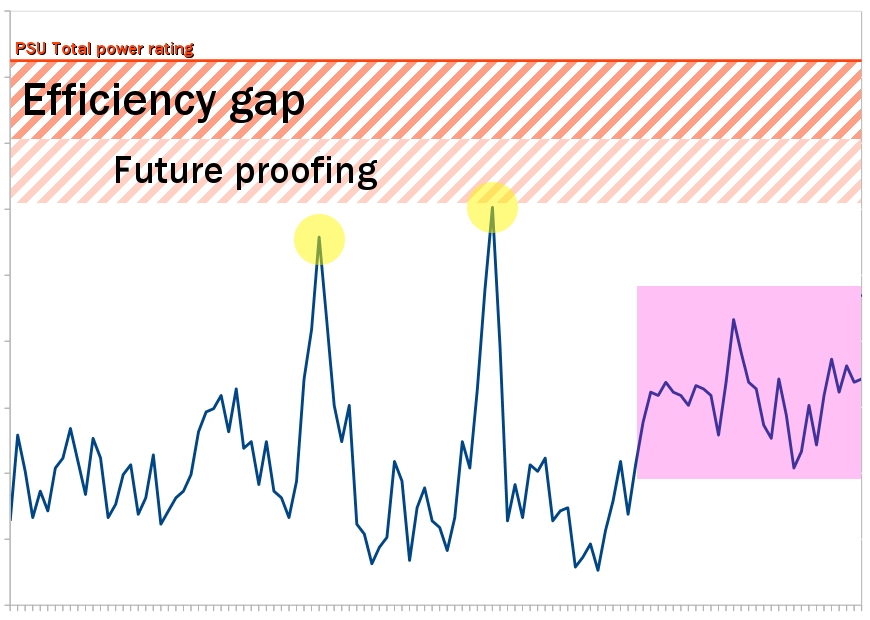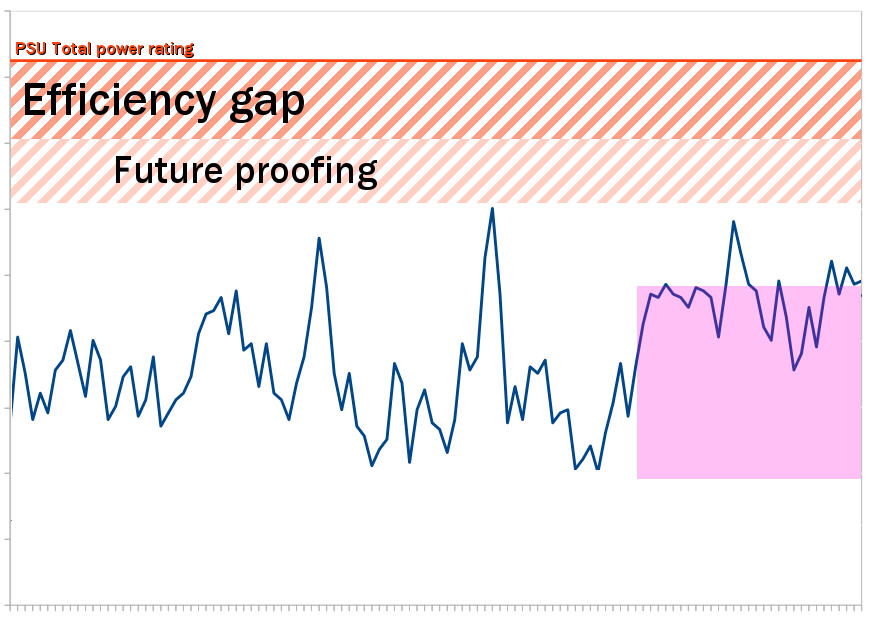You'd think the tallest peaks, highlighted in yellow, would be when the craziest visuals are happening onscreen in the game: many characters, destruction, smoke, lights, etc. But in fact, that's often not the case. Such impressive scenes are so complicated, the calculations necessary to render them bump into each other and stall briefly. Every transistor on the GPU may need to be in action, but some have to wait on work, so they don't all flip with every tick of the clock. So those scenes, highlighted in pink, don't contain the greatest spikes. (Though note that their sustained need is indeed higher.)
Instead, the yellow peaks are when there's work that's complex enough to spread over the whole chip, but just simple enough that it can flow smoothly without tripping over itself. Unbounded framerates can skyrocket, or background processes cycle over and over without meaningful effect. The useful work could be done with a lot less energy, but because clockspeed is fixed, the scenes blitz as fast as possible, spiking power draw.
Sony's approach is to sense for these abnormal spikes in activity, when utilization explodes, and preemptively reduce clockspeed. As mentioned, even at the lower speed, these blitz events are still capable of doing the necessary work. The user sees no quality loss. But now behind the scenes, the events are no longer overworking the GPU for no visible advantage.











